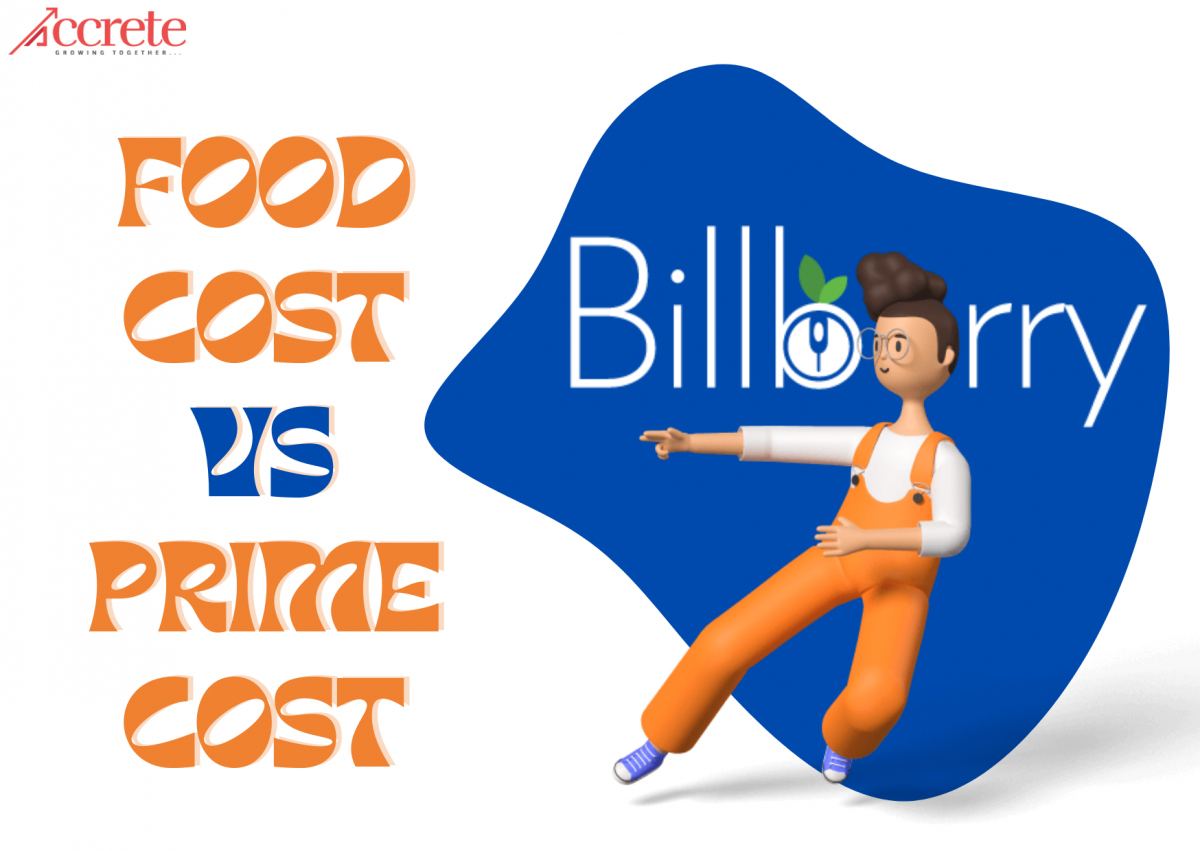Cost of operating any food business, weather it’s a franchise food business or running on the shoulders of a solo food entrepreneur, vary widely depending on where your business is established, how much you spend on raw materials, and whether you shop at a wholesale business or an independent retailer.
Some items are cheaper in bulk, while others are pricier per unit.
As a result, it all basically comes down to a few questions that cross every food business owner’s mind: What is Food Cost or What is Prime Cost of my food business?
Restaurant Management System – Free Demo
With this article, we will clarify all of your concerns about Prime Cost and Food Cost in relation to any restaurant type or food business, such as a fine dining restaurant, a quick service restaurant (QSR), a bakery, a pizzeria or an ice cream parlour. Let’s first dive into prime cost.
What is Prime Cost?
You’ve probably heard the term prime cost.
If you own, manage, or operate as a chef in a restaurant or other food-related business, prime cost is arguably the most critical component to keep track of, and you must understand what prime cost is.
Food and labour costs are directly intertwined to prime cost.
This phrase is commonly used in almost every industry that is involved in the producing business. The formula for calculating prime cost is as follows:
(TOTAL COST OF GOODS SOLD + TOTAL LABOUR COST) / TOTAL SALES = PRIME COST
You’ll need to refer to your restaurant food costs, part of which is provided by your restaurant management system to obtain the total cost of goods sold, and you’ll need to refer to labour costs to get the total labour cost.
So, why is prime cost so important? Because it’s possible to have a high food cost and low cost of goods sold.
On the other hand, a low cost of goods sold and a high labour cost are both feasible.
However, we definitely want it to be as low as possible.
In principle, the more you manufacture in-house, the cheaper your cost of goods sold should be.
However, because production requires labour, the higher the labour cost, the higher the cost of goods sold.
If you buy any raw materials, such as bread or chips, that have already been produced, your costs of goods sold will be slightly higher since purchasing that stuff costs more, but your labour costs should be slightly lower.
The key is that your prime cost should be less than 60% of total sales.
People talk about 60% as a magic figure all the time, but if things like insurance, operating costs, rent, and everything else have gone up, it shouldn’t impact the prime cost.
To stay profitable, your prime cost must be less than 60%.
There are a few exceptions to this rule, one of which being operating a food business in an area where your food establishment is expected to stay open for extended hours due to the other services it supports.
Those are the few situations where you may have a prime cost of above 60% and still operate a profitable business, but in most cases, if your prime cost is over 60%, you’re not as profitable, or not profitable at all.
Your aim is to reduce your prime cost to 60% or less.
What is Food Cost?
In this part, we’ll learn how to calculate food cost and why they’re important in any food businesses.
With this article, you’ll not only discover why learning food cost is important, but you’ll also learn all of the food cost formulas and calculations that you require to run a profitable food business.
Essentially, the price of food decides your profitability.
A right restaurant management software might surely help, but it is still difficult for you to manage and operate a highly profitable restaurant or any food business if you don’t know how much the items on your menu cost and what your food cost is at the end of each month.
It’s critical to understand where you need to make modifications and changes in order to stay profitable.
It establishes a standard for food industry owners.
Also, because a reduced food cost equates to better earnings, it’s something you should keep track of on a regular basis.
It enables you to price your menu items correctly.
It’s surprising to learn that the majority of restaurant owners, managers, and chefs have no idea how much each item on their menu cost to prepare.
You may use this information to optimize your menu, a process known as menu engineering.
It’s incredible how much earnings a food business can generate by doing nothing more than rearranging items around on a menu and perhaps adding a box on some menu items.
However, you won’t be able to do so unless you know the precise pricing of each item on your food menu.
Furthermore, most individuals make the mistake of equating restaurant food cost to how much they spend on food over a period of time.
This is yet another common myth or misunderstanding.
People would simply state that my food expense is the amount of money I spent on food in the previous month.
However, this is not the case.
If that’s how you figure out how much food costs, you’ll get a lot of false numbers.
Then, what food cost really is? In your food business, such as a Fine Dining Restaurant, Quick Service Restaurant (QSR), Ice Cream Shop, Pizzeria, Bakery, and others, there are only two sorts of food costs.
Restaurant Management System – Free Demo
Plate cost
Plate cost is simple to understand, and everyone in your food establishment should be aware of how much each plate or other item costs.
The plate cost is calculated by dividing the cost of preparing a plate by the cost of selling it. The following formula may be used to figure it out:
TOTAL COST / SALES PRICE = TOTAL PLATE COST
Period cost
This expense is a little more complicated, but if you operate a food business, you must understand it.
The following approach may be used to calculate it:
(BEGINNING INVENTORY + PURCHASES – ENDING INVENTORY) / TOTAL FOOD SALES = FOOD COST PERCENTAGE
With the help of this calculation, you can truly evaluate if there’s an issue or where we need to change prices with the use of this detailed data split down into specific categories.
We can also determine whether a food business is profitable or needs improvement.
- Now, there are two things you should keep in mind while utilizing the COGS formula.
- 1. Make sure you’re comparing purchases and inventories from the right categories to sales from the right categories. If you are attempting to figure out how much liquor costs, for example, you need to make sure you’re utilizing liquor purchases, liquor inventories, and liquor sales rather than overall sales.
- 2. Check that you’re comparing the right inventory and purchases to the right sales period.
Conclusion
Below are the list of all formulas that have been elaborated in the article:
| TYPE | FORMULA |
| PRIME COST FORMULA | (TOTAL COST OF GOODS SOLD + TOTAL LABOUR COST) / TOTAL SALES = PRIME COST |
| FOOD PERIOD COST | (BEGINNING INVENTORY + PURCHASES – ENDING INVENTORY) / TOTAL FOOD SALES = FOOD COST PERCENTAGE |
| PER PLATE FOOD COST | TOTAL COST / SALES PRICE = TOTAL PLATE COST |
Calculating prime cost and food cost have their different aspects.
Prime cost deals with labour cost on the other hand food cost doesn’t, because when you purchase already produced items directly, you eliminate the labour cost.
Although, there are differences but they both are very important to understand for every food business owner.
It will help you scale your food business along with aligning your food operations and conquering any issues that you might be facing related to your food business.







